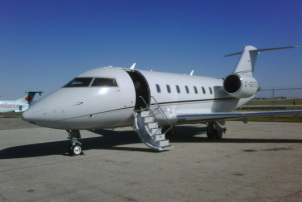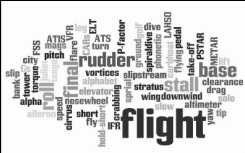Orientation
Learning to fly may be done for pleasure or for professional reasons. In Canada, you can pursue a recreational pilot's license, but most people who want to learn to fly for fun typically go get their private pilot's license, or PPL, which allows you to take a friend up (or a few friends, depending on the size of the aircraft you certify on). You can also get your commercial license, which will enable you to apply for piloting jobs at airlines. In either case, you will need to choose a school and get started with flight lessons and ground school.
Here's a bit of a road map to get you started...
Here's a bit of a road map to get you started...
How Long and How Much?
To get your PPL, you will need to attend Ground School (more on that later) and about 60 hours of flight instruction. Exact legal numbers of hours are available from Transport Canada, however most people, especially those doing this part time after work and on weekends, take longer than the minimum. Flight Training will include some dual time (you and the instructor together in the aircraft) and some solo hours.
All told, with flight instruction, ground school, parking at the school, transportation to and from, babysitting if you have kids and your partner is not willing or able to look after them while you are doing your thing, etc., etc., etc., plan to spend at least ten thousand dollars. I know, it doesn't sound cheap, but think about what you spend in a year at Starbucks, the bar, or in therapy -- and this is waaay more fun (most of the time!)
Ground School
If you are at a privately owned school, ground school generally is offered 1-2 nights a week for about 3 hours. Some schools also offer a crash course (no pun intended) over a number of weekends. In my experience, ground school tends to be taught by people who don't really want to be there, and who have few instructional strategies (after all, they are pilots, not teachers!), so find a mentor or get some friends together and form a study group. Or, if you have the time and the means, take your flight training at a committed institution like Seneca College, where the instructors are career teachers, and not just commercial pilots trying to pay the bills while they build hours and wait for a "real" job to come along. (This negative
stereotype is not always true... I have come across some excellent instructors both in Canada and the US who are really into teaching, and not just to gain hours, but these specimens seem to be few and far between.)
Me, I work full time as a teacher and university professor, plus I have a real affinity for the Island in Toronto, so I ended up just going to Island Air flight school for Ground School and flight lessons. If you're not totally manic like I am, I would seriously recommend taking the time to review this site from TC, and check out some different options before you commit. (BTW, if you want to read about my own ground school experiences, check out my online learning log here.)
Me, I work full time as a teacher and university professor, plus I have a real affinity for the Island in Toronto, so I ended up just going to Island Air flight school for Ground School and flight lessons. If you're not totally manic like I am, I would seriously recommend taking the time to review this site from TC, and check out some different options before you commit. (BTW, if you want to read about my own ground school experiences, check out my online learning log here.)
Flight Instruction
In order to make all the rules and theory come alive, you will be spending some time in an airplane -- like a Cessna 150, 152 or 172 -- with an experienced pilot and licensed flight instructor. These lessons will be about 1.5 - 2 hours in length, with the first 20-30 minutes spent in a "ground brief", and the rest of the time spent in the air, implementing what you talked and read about. Most of what you do will come from the TC Flight Training Manual. Your instructor will likely give you homework between lessons. It is always a good idea to review the exercises you have done within 24 hours of the lesson, and then again before your next lesson. A big problem if you are only flying once a week is retention.
I find it a real challenge financially and time wise to keep up my flying time, so I supplement with a video series like the one I bought for about $70 at Pilottraining.ca this way I can "practise" visually in between lessons. Chatting with others who fly is also helpful. So much of the learning for me was verbal -- new terms and concepts I knew nothing about -- it really helped to immerse myself with the vocabulary by meeting with other pilots and student pilots and just getting a sense of it all!
Your flight training will include some dual hours and some solo hours. You will also spend time (later) doing cross-country flying. Initial flight training is "VFR" or "Visual Flight Rules".
Student Pilot Permit
Once you are done with Ground School, and have a few hours of flight instruction under your belt, you'll want to start thinking about getting things in place for your student permit. That way, once your instructor feels you are ready, you'll be able to solo! Here's what you'll need:
1. Restricted Radio Operator's License
2. PSTAR - click here to learn more!
3. Medical Class 3
For more information on licensing in general, check out this part of the TC website.
2. PSTAR - click here to learn more!
3. Medical Class 3
For more information on licensing in general, check out this part of the TC website.
Mentors and Tutors
Learning to fly is not cheap, and can be incredibly overwhelming. Paying an instructor $35-65 an hour is not always a realistic way to get the help you need. Meeting regularly with others who are learning to fly can help keep the spark going when you feel like you can't do it. My ground school classmates have been really super about sending me words of encouragement (and the odd raunchy joke) when I am feeling down.
What's also worked well for me is the encouragement of enthusiastic pilots willing to share their passion with someone new to it all. If you don't already know a pilot or two, find one. Email people from websites, post an ad on Craigslist, talk to everyone you know and ask for help. I have been incredibly fortunate to have three or four experienced pilots and instructors willing to share their time with me periodically to meet for lunch, a coffee or even just an email now and again to answer my endless questions and offer encouragement. It makes days like today so much more bearable!
If you are up for a FREE intro, check out this site.
Please... visit some of our sponsors below:


